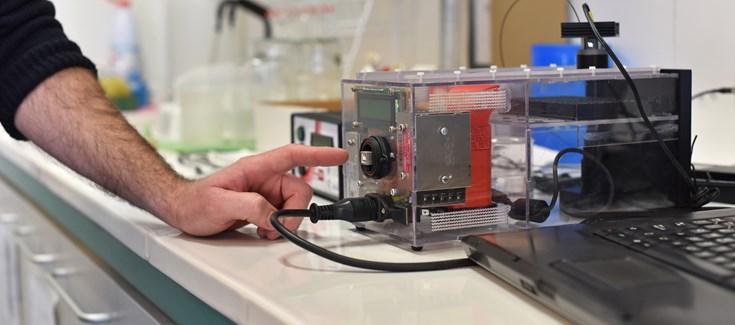
Ramon Martínez Máñez, Scientific Director of Unit 26 of NANBIOSIS, has participated in the development, on a laboratory scale, of a low cost device for treatments based on the application of optical hyperthermia by laser.
Among the applications of this technique are the therapies against cutaneous cancer and its objective is to get the death of the tumour cells by overheating. Overheating is achieved by the irradiation of synthesized metal nanoparticles.
The prototype developed consists of an infrared laser with a power of up to 500mW able to provide a power density of up to 4W / cm2, a sensor that allows recording the temperature in real time during the irradiation and a power regulator of the laser, among other components.
The work shows the keys for the development of low cost equipment for the technique of optical hyperthermia. The main novelty with respect to other commercial equipments is that it integrates all the necessary elements for the experimental phase, controlling as many variables as possible.
Currently, there are different laser applicators, used in dermatology and surgery. At certain powers and wavelengths, the energy of the laser is transformed into heat and produces ablation (burn), with the adjacent inflammation that this causes. The prototype is intended to introduce to sick cells nanohaters that, when stimulated by the laser, raise their temperature to 42-48 °, producing hypoxia.
This equipment is already being used successfully in cell cultures in vitro and is also working on therapies in which hyperthermia is combined with controlled release of drugs. Once the technique was developed, it could easily be transferred to a hospital environment by implementing small changes.
Roberto Montes-Robles, Andy Hernandez, Javier Ibáñez, Rafael Masot-Peris, Cristina de la Torre, Ramón Martínez-Máñez, Eduardo García-Breijo, Rubén Fraile. Design of a low-cost equipment for optical hyperthermia. Sensors and Actuators A: Physical.








